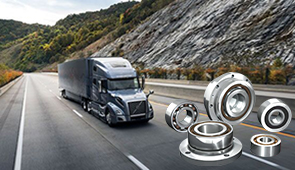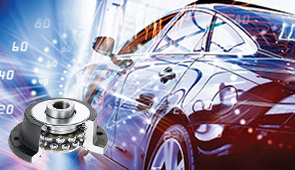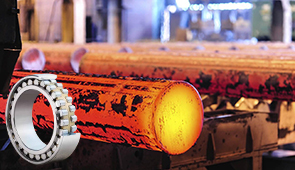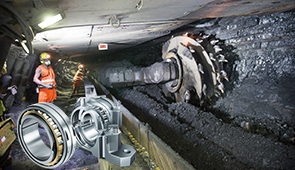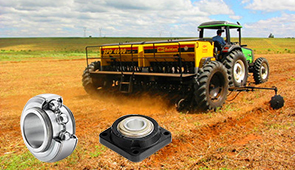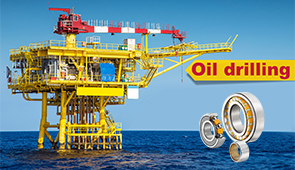The Ultimate Guide to Electric Motor Bushings for Optimal Performance
Electric motor bushings are critical to the reliable operation and longevity of countless machines and systems across industries. Despite their small size, these components play a significant role in reducing friction, supporting the shaft, and ensuring smooth functionality under various operating conditions. Whether you’re an engineer, technician, or industry professional, understanding the intricacies of electric motor bushings is essential for maintaining efficiency and avoiding costly failures. This guide is designed to provide a comprehensive overview of electric motor bushings, their functions, materials, and the factors that influence their performance. By the end, you’ll have the knowledge needed to optimize motor performance and make informed decisions for your specific applications.
What Are Electric Motor Bushings and Their Applications?
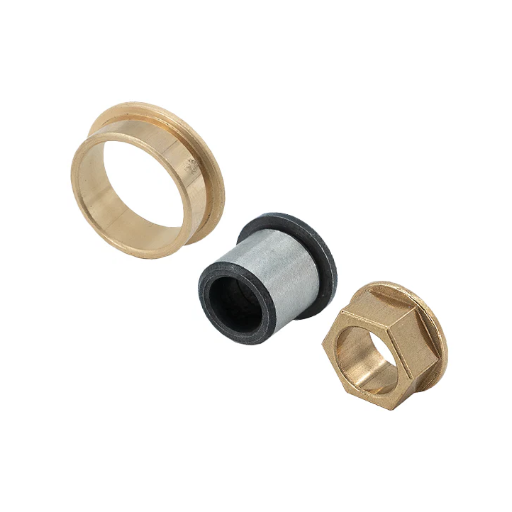
Understanding the Role of Bushings in Electric Motors
Electric motor bushings are integral types of components that help ensure the safe and efficient operation of the motor. Primarily, bushings work as a mechanical interface between moving parts that induce friction, and they reduce wear through smooth motion inside the motor assembly. They are vital in keeping alignment of the motor and minimizing energy loss that impedes motor performance and working lifetime.
An application may, however, require various materials for manufacturing bushings. Typically, the materials include bronze, graphite, engineered polymer, and so the choice depends upon their ability to stand against certain conditions like high temperatures, chemical action, and mechanical force. For example, the bronze bushings are very popular among users for their good strength and thermal conductivity in application scenarios where heat dissipation is of importance.
Besides load capacity, lubrication, and the environment will also be significantly affected bushing performance. Appropriate lubrication reduces friction and heat production; meanwhile, the bushing design and material should fit the motor’s particular working conditions. Taking care of all these factors, bushings considerably improve motor efficiency, reliability, and service life.
Common Applications of Motor Bushings
Motor bushings find usage in a multitude of industries due to their function of reducing friction while supporting rotating or sliding components and improving operational efficiency. One of the more typical uses is found in electric motors, where bushings allow the motor shaft to rotate smoothly with minimal wear and vibration. The application finds importance in industries where efficiency and uptime directly translate into output; hence, the manufacturing and automation sectors.
Motor bushings have further automotive applications, particularly for use in electric vehicles and internal combustion engines. Motor bushings in such setups are essential in maintaining stability for components under constant motion, varying load, and heat. They assist in noise reduction and longevity, which are critical to transport infrastructure reliability.
In addition to industrial and automotive applications, motor bushings find use in consumer appliances for washing machines, refrigerators, and air conditioning systems. Bushings help reduce operational noise and increase durability, thereby giving the end user a pain-free experience. This great versatility and efficiency of motor bushings have earned them their place as an essential component in many day-to-day and industrial applications.
How Do Bushings Enhance Electric Motor Efficiency?
Bushings enhance motor efficiency by reducing friction and wear between moving parts. Acting as a buffer, bushings prevent the direct contact of surfaces between the rotating shaft and stationary parts, thus decreasing the frictional energy losses and giving room for the motor to maintain its operational integrity. Another benefit of preventing wear is that it increases the lifetime of electric motors, making maintenance or replacements less frequent.
Another important function of bushings is vibration damping. Significant vibrations are created by electric motors when they operate, and such vibrations impose mechanical stresses and energy losses. These vibrations are absorbed by the bushings, thereby stabilizing motor action and diminishing the noise level. This leads to smooth operation and appropriate usage of energy in the system, hence increasing efficiency.
Thermal management is yet another aspect that bushings help with in electric motors. Friction produces heat, which is detrimental to motor components and efficiency. By stopping friction, bushings minimize the heat generated so that motors can safely operate within their temperature limits. Besides improving performance, it precludes overheating issues, thereby ensuring the reliable operation of motors in various applications.
How to Choose the Right Bushing Bearing for Your Motor?
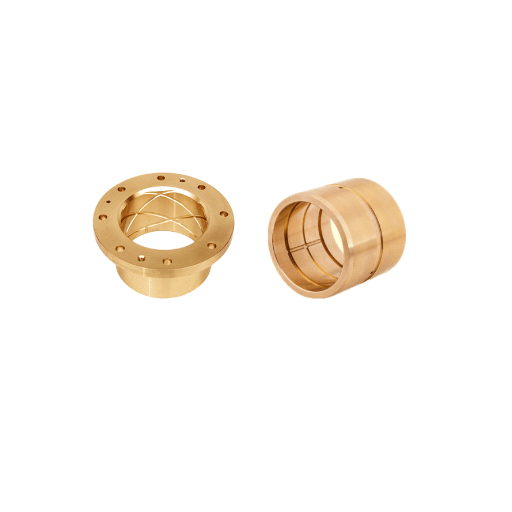
Factors to Consider When Selecting Bushings for Electric Motors
There are several criteria to consider when selecting bushing bearings for electric motors to ensure serviceability and optimal performance.
- Material: The bushing material is instrumental in its ability to resist wear and bear loads, apart from being compatible with the motor’s working environment. Popular materials are bronze, graphite, and composite polymers, each carrying specific advantages. For instance, sintered bronze bushings are best known for self-lubricating, thought to require no lubrication in service, whereas those of polymer Ghana-type do well in the application areas where there is little or no lubrication.
- Thermal Resistance: Electric motors operate in an environment wherein heat generation is expected. Thus, it is crucial to select bushings that can tolerate high temperatures to avoid deformation and failure. Materials with very good thermal conductivity, for instance, certain bronzes, may also help dissipate the heat faster, further preserving the bushing and motor integrity.
- Load-Bearing Capacity: From a mechanical point of view, the load upon the motor should be considered, and the bushing should be capable of resisting the radial and axial forces occurring during the operation. Overloading from a force exceeding the rating would wipe out the bushing through extreme wear or disastrous failure.
- Operating Speed: The speed at which the bushings allow the motor to rotate would pose excessive friction and heating of the bushings in low-speed situations. For high-speed applications, such materials are low-friction and high-strength, which greatly reduces additional energy loss and ensures they run.
- Environmental Conditions: Consider special environmental factors peculiar to the site in which the motor is operating, such as moisture, dust, chemicals, or temperature extremes. In extreme situations, bushings with corrosion resistance and sealing are desirable.
- Lubrication Requirements: Some require periodical lubrication; others, including self-lubricating and dry-running types, hardly need it. Consider whether the applicable length of time between lubrications can fit with the operational requirements of the equipment.
- Costing and Life Cycle Consideration: An interesting balance is created by weighing the initial cost of the bushing versus the expected life of the bushing and the frequencies of its maintenance assessment. Normally, the higher-quality bushings with the longest operational lifespan lead to the lowest overall cost of maintenance due to less associated downtime and replacement.
Basic factors described in the above section, when considered together, will aid in the choice of the bushing best suited to complement the operational-performance factors of a motor, leading to enhanced reliability and suitability for specific application demands. This way, an optimal configuration of the operational parameters of the motor with the bushings ensures the highest efficiency and durability.
The Importance of Proper Shaft Alignment
Shaft alignment maintains the basic functionality and longevity of rotating machinery. Proper shaft alignment assures efficient torque transfer, thereby reducing mechanical stresses and minimizing wear on machine components. Misalignment in shaft types can be parallel or angular-while increasing vibration levels also cause energy losses, leading to premature failures of vital components like bearings, couplings, and seals. Research in mechanical engineering has shown that even a very slight misalignment can increase working temperatures, further causing inefficiency in the system.
Nowadays, advanced tools and techniques are employed to ensure accurate shaft alignment. Laser alignment gives precise readings, thereby enabling the technicians to correct the misalignment accordingly. They work by making allowances for the slightest of deviations and allowing adjustments to ensure alignment within micrometric tolerances. In addition to this, predictive maintenance models, while supporting condition monitoring in real-time, can identify potential alignment issues before they manifest into catastrophic equipment failure, thus amalgamating traditional mechanical philosophy with modern ways of solving shaft alignment issues.
Directly from proper shaft alignment comes good energy efficiency and enhanced longevity of mechanical components. Proper alignment thus also reduces energy consumption through frictional losses, dovetailing well with the larger agenda of energy conservation and sustainability. Furthermore, abiding by alignment standards like those by ANSI and ISO gives entities best practice recognition and a competitive advantage. Bearing in mind, alignment thus equates to improved reliability, low operational costs, and improved machine performance over time.
Comparing Bronze and Graphite Bushings
Bronze bushings can withstand any type of force and abrasion, though graphite bushings remain self-lubricating, being chemically resistant, and are designed to perform better at high temperatures and loads.
|
Aspect |
Bronze |
Graphite |
|---|---|---|
|
Strength |
High |
Moderate |
|
Lubrication |
External needed |
Self-lubricating |
|
Load Handling |
High |
Very high |
|
Friction Level |
Moderate |
Low |
|
Heat Tolerance |
Moderate |
High |
|
Chemical Tolerance |
Low |
High |
|
Upkeep |
Regular |
Minimal |
Maintenance Tips for Self-Lubricating Bushings
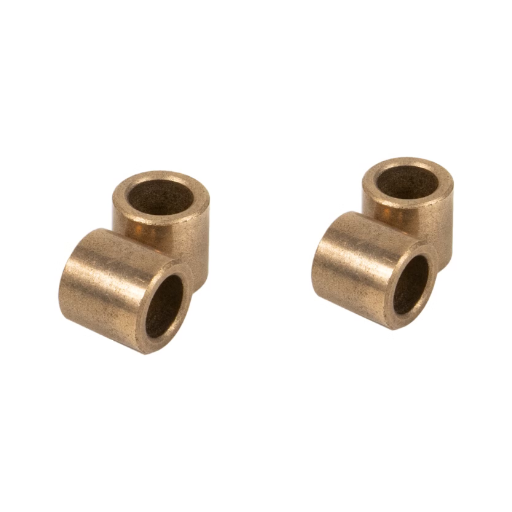
Routine Maintenance Practices for Longevity
To maximize the working life and efficiency of self-lubricating bushings, it is imperative to follow certain maintenance provisions. In contrast to normal bushings relying on the product to lubricate them from the outside, these are special bushings that have the lubrication material impregnated in their structure and require much less upkeep. However, it is crucial to carry out periodic inspections to determine wear, contamination, or any misalignment.
- Environmental Monitoring: Ensure a clean and dry operating environment free from excessive dust, debris, or corrosive agents, as these can affect the self-lubricating property of the bushings and cause abrasive wear. Regularly clean the immediate surroundings.
- Load and Alignment Inspection: Ensure that the bushings are not subjected to loading above their design load capacity, the effect of which is to accelerate the rate of material deterioration. On the other hand, keep alignment errors to a minimum to prevent uneven wear of the bushings and to ensure smooth operation.
- Temperature Management: While monitoring system operating temperatures, avoid prolonged application of excessive heat that might ruin the embedded lubricants, especially in high-speed or heavy-load applications. If necessary, ensure proper cooling is provided.
- Lubrication Verification: By observing performance parameters such as torque and friction, ensure that the built-in lubrication remains functional since self-lubricating bushings require no additional grease or oil.
- Periodic Replacement of Worn Components: Worn-out bushings subjected to considerable sliding wear or damage should be promptly replaced so as not to compromise neighboring machines or the performance of the system, thus avoiding secondary mechanical failures and improving system reliability.
Consequently, the above maintenance regimes ensure the operator gets the best life, performance, and cost-effectiveness from the self-lubricating bushings with minimal downtimes and less resource expenditure.
How to Lubricate Electric Motor Bushings?
Proper lubrication of electric motor bushings is necessary for smooth operation, friction reduction, and wear prevention. The sequence of activities includes several steps that must be in harmony with manufacturer’s guidelines and specific operating conditions of the motor.
- Identify the Type of Bushing: Assume that the bushing is either self-lubricating or needs manual lubrication. Self-lubricating bushings, such as those impregnated with oil or composite materials, typically do not require routine lubrication, while conventional bushings have to be provided with external lubrication for best performance.
- Select the Appropriate Lubricant: Use a lubricant as per the requirements of motor operation. Usually, high-grade mineral oils or synthetic lubricants are recommended for the lubrication of electric motor bearings because of their temperature stability, low rate of oxidation, and dielectric properties. Compatibility should also be checked with the bushing material so as not to chemically degrade the bushing.
- Clean the Surrounding Area: Before applying the lubricant, clean the area surrounding the bushing to get rid of any dust or debris, or residue of old lubricant. Such contaminants can become abrasive wear and negate the effect of the entire lubrication process.
- Apply Lubricant Precisely: When lubrication fittings or ports are available on the motor, corresponding grease guns should be used to inject the lubricant right to the bushing. Do not over-lubricate, as excess lubricant may cause overheating or the leakage of lubricant into other components of the motor.
- Observe and Maintain Lubrication Levels: Periodic inspection is necessary to confirm that lubrication levels are in the desired range. For motors in heavy-duty service or at elevated temperatures, lubrication intervals should be shortened.
Recent data reveal that improper lubrication practices comprise a material percentage of electric motor failures throughout the world. By applying the details steps mentioned and referring to the specific operating requirements, operators can improve the performance of the motor and lengthen the life cycle of vital components.
Signs of Wear and Tear in Motor Bushings
Motor bushings, being components of an electric motor, if not extremely critical, are continuously subjected to mechanical stress and operational wear. Being able to recognize the signs of degradation is necessary to prevent major system failures. Some of the common signs include:
- Abrasion and Scuffing: Severe friction can cause visible surface damage in the form of scuff marks or polishing of the bushing surface. This generally occurs due to improper lubrication or misalignment.
- Unusual Operation Noise: Noise could emanate from misalignment caused by worn bushings. Common noises ranging from rattle, squeal, to grinding can be an early warning for the motor installation becoming unstable.
- Thermal Discoloration: Exposure to high temperatures for an extended period could cause discoloration, if not deformation, to bushing material. There could be an indication of overheating caused by excessive friction or inadequate cooling conditions.
- Dimensional Alterations: Wear with time might change the diameter or thickness of the bushings, producing play or movement in the motor shaft, thereby reducing its efficiency and increasing vibration.
- Visibly Cracked or Broken: Microscopically small cracks or weaknesses may propagate to larger fractures under constant mechanical stress, especially in heavy-duty operational environments.
Scheduled and continual checking of these symptoms could help to enhance the operational efficiency and lifespan of motors, alongside ensuring proper lubrication intervals and alignment procedures.
Reducing Vibration and Noise with Electric Motor Bushings
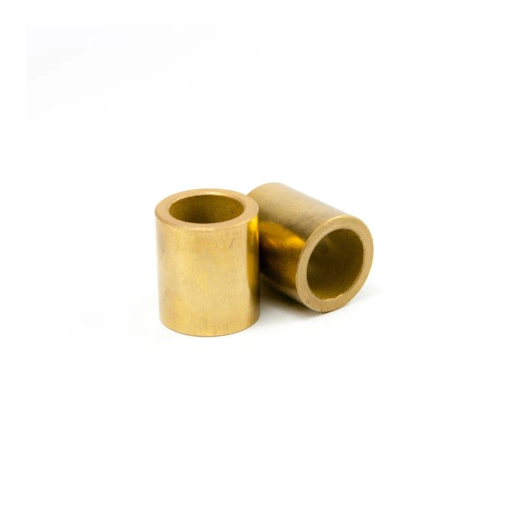
How Do Bushings Dampen Vibration?
Bushings reduce vibrations by absorbing and dissipating some of the mechanical energy generated when electric motors operate. Bushings are, of course, made from flexible material such as rubber or special polymers and act as isolators, preventing vibrational forces from being transmitted from the motor to neighboring structures. By preventing resonance from being created and present vibrations from reinforcing mechanical noise, the bushings reduce wear on nearby components.
The vibration-damping efficiency of bushings is dependent upon the nature of their materials, the durometer hardness, and the design of the bushing itself. Improvement in materials has given manufacturers the ability to design and build extremely high-performance bushings to withstand the harshest of temperature extremes, chemical attacks, and prolonged mechanical stress. Materials like EPDM (ethylene propylene diene monomer) elastomers and thermoplastic polyurethanes, for example, are gaining popularity due to their ability to withstand wear and tear and efficiently damp high-frequency vibrations.
The installation and alignment of the bushings must be highly accurate to further optimize performance. When bushings are properly calibrated, load distribution is even, thereby minimizing the possibilities of localized stress, which improves the overall road stability of electric motors and life expectancy. Detailed modeling and simulation tools can also assist during the design phase in predicting vibration behavior, so bushing configurations can be optimally designed for the individual application. A systematic treatment of vibrations ensures the development of quieter, more reliable motor systems and the simultaneous extension of the working life of essential components.
Choosing the Right Rubber Bushings for Noise Reduction
When selecting rubber bushings for noise reduction applications, these parameters must be analyzed technically to ensure maximum performance and compatibility. The material composition of bushings is critical since every rubber compound is different in its elasticity, damping capacity, and resistance against environmental influences such as heat, chemicals, and aging effects; for example, natural rubber is most flexible with good damping, and it can degrade faster when subjected to high temperatures, while synthetics like neoprene or EPDM will resist environmental degradation and have better thermal resistance.
The hardness goes a long way in deciding how effective the bushings will be in attenuating vibration and noise. Soft bushings catch more vibration and are therefore better for small to medium load applications; hard bushings, on the other hand, would handle heavy load situations but with somewhat lesser noise attenuation. Depending on the working state of the motor system, one will need to balance these properties accordingly.
The bushing sizing-wise-the inner diameter, outer diameter, thickness, and flange design-should be customized to fit best in the mechanical setup with an ideal contact pressure. Bushings, if the wrong size, either bring unwanted gaps or get overcompressed, both of which result in inferior performance or an early exit.
Using advanced simulation tools, the behavior of the bushing under dynamic conditions, which considers factors like variable frequency, load fluctuation, and thermal cycling, can actually be used to fine-tune the recommendation of a particular application. This kind of data-based method saves lead times by cutting short trial-and-error testing and ensuring the desired results with a higher degree of certainty. The result is that professionals will be choosing rubber bushings that meet all these criteria for efficient noise reduction while ensuring structural integrity and longevity of the system.
Understanding the Different Types of Electric Motor Bushings
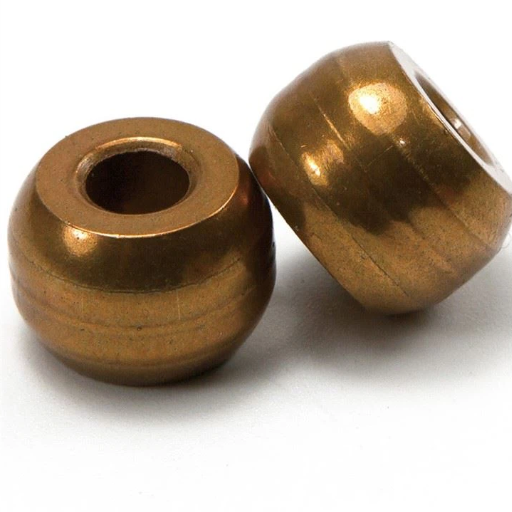
Overview of Self-Lubricating Bearings
The self-lubricating bearing is a high engineering solution working to minimize friction and wear inside with little or no need for continual external lubrication. The bearings generally incorporate materials like graphite, PTFE (polytetrafluoroethylene), or metal-polymer composites, which offer lateral lubrication as they operate. Common configurations are of sintered bronze or bimetallic type impregnated with a lubricant, thus offering fine performance in high- and low-load and speed combinations.
Hence, industries like automotive, aerospace, and manufacturing all use these bearings to counter difficult environments, including highly contaminating ones or harsh temperatures. Many of these high-performance self-lubricating bearings, for example, can resist temperatures above 500°F, all the while keeping excellent load-bearing properties.
Mechanically, data suggest that self-lubricating bearings vastly cut down maintenance costs and extend the lifetime of mechanical systems. Studies show decreased operational downtime in systems using self-lubricating bearings and further present a viable economic and energy alternative when compared to traditionally lubricated bearings. With improvements in materials science and manufacturing acting as strong enablers, the self-lubricating bearings are constantly evolving and hence being introduced into ever-more-demanding applications.
Exploring Bushing Materials: Rubber, Bronze, and More
The materials used for bushings affect how a mechanical system performs, how durable it is, and how suitable it is for its operating environment. One of the most common materials is rubber, which is used for its flexibility, vibration damping, resistance to environmental degradation under moderate conditions, and so forth. They are used in applications where the isolation of noise and vibrations is of importance, such as automotive suspension and certain types of industrial machinery. Yet, under certain extreme temperature and mechanical load conditions, they may not perform as expected.
The bronze bushings, conversely, are valued for their strength and wear resistance, thus allowing them to sustain higher operational loads. They find application in heavy machinery, agricultural machinery, warfare, and marine usage, wherein their durability and self-lubricating nature (especially when paired with embedded graphite or oil) surpass any other contenders of performance. Thus, bronze stands as an option for scenarios where there is a need for higher resilience and minimal maintenance.
Therefore, any advancements in composite and polymer materials keep evolving the field. Materials based on PTFE composites and high-performance engineering plastics provide low coefficients of friction, excellent thermal stability, and superior corrosion resistance. These materials are turned towards some key industries, including aerospace and medical devices, where conventional materials are deficient in either precision or quite specific properties required for efficient operation.
An engineer must understand the peculiar nature and limitations of each material so that an optimized system is attained for performance and life, while taking into account cost as well as environmental and mechanical demands.
The Role of Self-Lubricating Graphite Bushings
Self-lubricating graphite bushings constitute integral components of engineering to reduce friction, wear, and the need for outside lubrication in mechanical systems. These bushings exploit the natural lubricity of graphite material with a layered crystalline structure that can resist high temperatures and retain smooth working motion under demanding conditions. The specific ability of graphite permits it to work in dry and fairly adequately lubricated conditions, and, therefore, it is application-wise, preferred in situations where normal oil or grease lubrication may not be implementable or desirable.
Self-lubricating graphite bushings find their applications in the aerospace industry, the automobile industry, and the general industrial machinery sector. When it comes to rotary devices and high-temperature environments, these bushings are the best fit, given their thermal stability and ability to withstand oxidative environments. Their anti-seizure nature prevents this equipment from failure during extreme operation, thus enhancing reliability and reducing maintenance downtime. Besides, graphite bushings also find use in environmentally sensitive applications, removing any scales for the use of lubricating oils that may pose contamination or disposal issues.
The self-lubricating graphite bushings are essentially a very efficient solution in terms of both performance and cost-efficiency to further support issues in mechanical designing and operational sustainability.
Frequently Asked Questions (FAQ)
Q: What is the primary function of electric motor bushings?
A: The primary function of electric motor bushings is to reduce friction between the electric motor shaft and the housing, providing support and alignment to the rotating components. They help in maintaining mechanical reliability and reducing wear and tear on the motor components.
Q: How do sleeve bearings enhance the performance of electric motors?
A: Sleeve bearings enhance the performance of electric motors by providing a smooth surface for the electric motor shaft to rotate against. This reduces friction and wear, thereby increasing the service life and reliability of the motor. They also help in dampening vibrations and shocks, which can improve overall mechanical stability.
Q: Why is lubrication important for electric motor bushings?
A: Lubrication is crucial for electric motor bushings as it reduces friction and wear between the moving parts. Using the right lubricant or oil can prevent overheating, reduce maintenance costs, and extend the service life of the components. Proper lubrication also helps in protecting against contaminants like dust and moisture.
Q: What are the advantages of using brass or carbon bushings in electric motors?
A: Brass and carbon bushings offer distinct advantages in electric motors. Brass bushings provide excellent wear resistance and load capacity, making them suitable for high-load applications. Carbon bushings, on the other hand, offer superior lubrication properties and can withstand electrical and thermal shock, making them ideal for demanding conditions.
Q: How do electric motor bushings contribute to reducing maintenance costs?
A: Electric motor bushings contribute to reducing maintenance costs by minimizing wear and tear and extending the service life of the motor components. By providing proper alignment and reducing friction, bushings decrease the frequency of repairs and replacements, thus lowering overall maintenance expenses.
Q: What factors should be considered when selecting bushings for electric motors?
A: When selecting bushings for electric motors, factors such as load capacity, lubrication requirements, environmental conditions (e.g., moisture and dust), and material compatibility (e.g., brass or carbon) should be considered. It is also important to ensure that the bushings meet the specific application requirements and specifications of the motor.
Q: How do bushings help in maintaining the alignment of the electric motor shaft?
A: Bushings help maintain the alignment of the electric motor shaft by providing a snug fit around the shaft and within the motor housing. This alignment minimizes vibrations and mechanical loss, ensuring that the rotor and stator remain properly aligned during operation, which is critical for optimal performance.
Q: What role do bushings play in preventing contamination in electric motors?
A: Bushings play a vital role in preventing contamination by acting as a seal against dust, moisture, and other contaminants that could enter the motor. This protective barrier helps preserve the integrity of the components, reduce friction, and extend the motor’s service life.
Q: Can the use of bushings prevent electric motors from overheating?
A: Yes, the use of bushings can help prevent electric motors from overheating by reducing friction and facilitating proper heat dissipation. Lubricated bushings ensure smooth operation and minimize the buildup of heat, thus protecting the motor from thermal damage.
UCTH213-40J-300 with Setscrew(inch)
CNSORDERNO: Normal-duty(2)
TOGN: UCTH213-40J-300
SDI: B-R1/8
SD: 2 1/2
UCTH212-39J-300 with Setscrew(inch)
CNSORDERNO: Normal-duty(2)
TOGN: UCTH212-39J-300
SDI: B-R1/8
SD: 2 7/16
UCTH212-38J-300 with Setscrew(inch)
CNSORDERNO: Normal-duty(2)
TOGN: UCTH212-38J-300
SDI: B-R1/8
SD: 2 3/8
UCTH212-36J-300 with Setscrew(inch)
CNSORDERNO: Normal-duty(2)
TOGN: UCTH212-36J-300
SDI: B-R1/8
SD: 2 1/4
UCTH211-35J-300 with Setscrew(inch)
CNSORDERNO: Normal-duty(2)
TOGN: UCTH211-35J-300
SDI: B-R1/8
SD: 2 3/16
UCTH211-34J-300 with Setscrew(inch)
CNSORDERNO: Normal-duty(2)
TOGN: UCTH211-34J-300
SDI: B-R1/8
SD: 2 1/8










